*NURSING > TEST BANK > Chapter 25_ Airway Management _ Nursing School Test Banks Questions and Answers (All)
Chapter 25_ Airway Management _ Nursing School Test Banks Questions and Answers
Document Content and Description Below
Chapter 25: Airway Management MULTIPLE CHOICE 1. A patient with a tracheostomy tube has thick, tenacious mucus that is difficult to remove. The nurse should choose which technique to suction the ai... rway? a. Normal saline instillation (NSI) before suctioning b. Dry suctioning 1 time followed by NSI with suctioning 2 more times c. Dry suctioning as long as the heart rate is above 60 beats/min d. Dry suctioning ANS: D Normal saline instillation (NSI) into artificial airways is no longer recommended as standard practice. Clinical studies show that suctioning with or without NSI produces similar amounts of secretions and significant decreases in oxygen saturation. Potential side effects include increases in heart rate for 4 to 5 minutes after suctioning using NSI as opposed to dry suctioning. NSI has the potential to increase ventilatorassociated pneumonia because bacteria from the upper airway can be dislodged to the lower airway. DIF: Cognitive Level: Applying REF: Text reference: p. 625 OBJ: Correctly perform oropharyngeal suctioning, tracheal suctioning, endotracheal care, and tracheostomy tube care. TOP: Normal Saline Instillation Students Chat Room 14 2/20/2017 Chapter 25: Airway Management | Nursing School Test Banks https://nursingtestbank.info/chapter25airwaymanagement/ 2/27 KEY: Nursing Process Step: Implementation MSC: NCLEX: Physiological Integrity 2. A patient using a nasal cannula has gurgling on inspiration. The nurse notes a productive cough but the inability to clear the secretions from the mouth. Which action should the nurse take first to prepare for oropharyngeal suctioning? a. Apply clean gloves and a mask. b. Insert the suction device to the back of the throat. c. Remove the patient’s nasal cannula. d. Connect the tubing to a standard suction catheter. ANS: A Perform hand hygiene and apply clean gloves. Apply a mask or face shield if splashing is likely. Insert the device into the mouth along the gum line to the pharynx. Remove the patient’s oxygen mask, if present. A nasal cannula may remain in place. Connect one end of the connecting tubing to the suction machine and the other to a Yankauer suction catheter. DIF: Cognitive Level: Applying REF: Text reference: p. 627 OBJ: Correctly perform oropharyngeal suctioning, tracheal suctioning, endotracheal care, and tracheostomy tube care. TOP: Oropharyngeal Suctioning KEY: Nursing Process Step: Implementation MSC: NCLEX: Physiological Integrity 3. After oropharyngeal suctioning of a patient, the nurse notes bloody secretions in the suction catheter and tubing. What should the nurse do next? a. Students Chat Room 14 2/20/2017 Chapter 25: Airway Management | Nursing School Test Banks https://nursingtestbank.info/chapter25airwaymanagement/ 3/27 Increase the suction pressure. b. Provide additional oxygen. c. Reduce the frequency of oral hygiene. d. Check the suction catheter for nicks. ANS: D Observe the catheter tip for nicks, which can cause mucosal trauma. The nurse should assess the oral cavity for trauma or lesions, reduce the amount of suction pressure used, provide supplemental oxygen only if respiratory distress occurs, and increase the frequency of oral hygiene. DIF: Cognitive Level: Applying REF: Text reference: p. 628 OBJ: Describe the nursing interventions for airway management. TOP: Oropharyngeal Suctioning KEY: Nursing Process Step: Evaluation MSC: NCLEX: Physiological Integrity 4. The nurse is caring for an infant who has been vomiting and is having difficulty breathing. What actions by the nurse are appropriate for suctioning the infant? a. Place the infant in a supine position. b. Suction only when a large amount of mucus is present. c. Suction for only 30 seconds. d. Compress the bulb syringe after it is placed in the nostril. Students Chat Room 14 2/20/2017 Chapter 25: Airway Management | Nursing School Test Banks https://nursingtestbank.info/chapter25airwaymanagement/ 4/27 ANS: A Position infants with breathing problems or excessive vomitus in a supine or sidelying position. Airways of infants and children are smaller than those of an adult; even small amounts of mucus can cause airway obstruction. Suction should be completed for only 5 seconds with 30 to 60 seconds in between for the patient to reoxygenate. Compress the bulb syringe before insertion to prevent forcing secretions into the infant’s bronchi. [Show More]
Last updated: 1 year ago
Preview 1 out of 27 pages
Instant download
.png)
Buy this document to get the full access instantly
Instant Download Access after purchase
Add to cartInstant download
Reviews( 0 )
Document information
Connected school, study & course
About the document
Uploaded On
Sep 09, 2021
Number of pages
27
Written in
Additional information
This document has been written for:
Uploaded
Sep 09, 2021
Downloads
0
Views
110

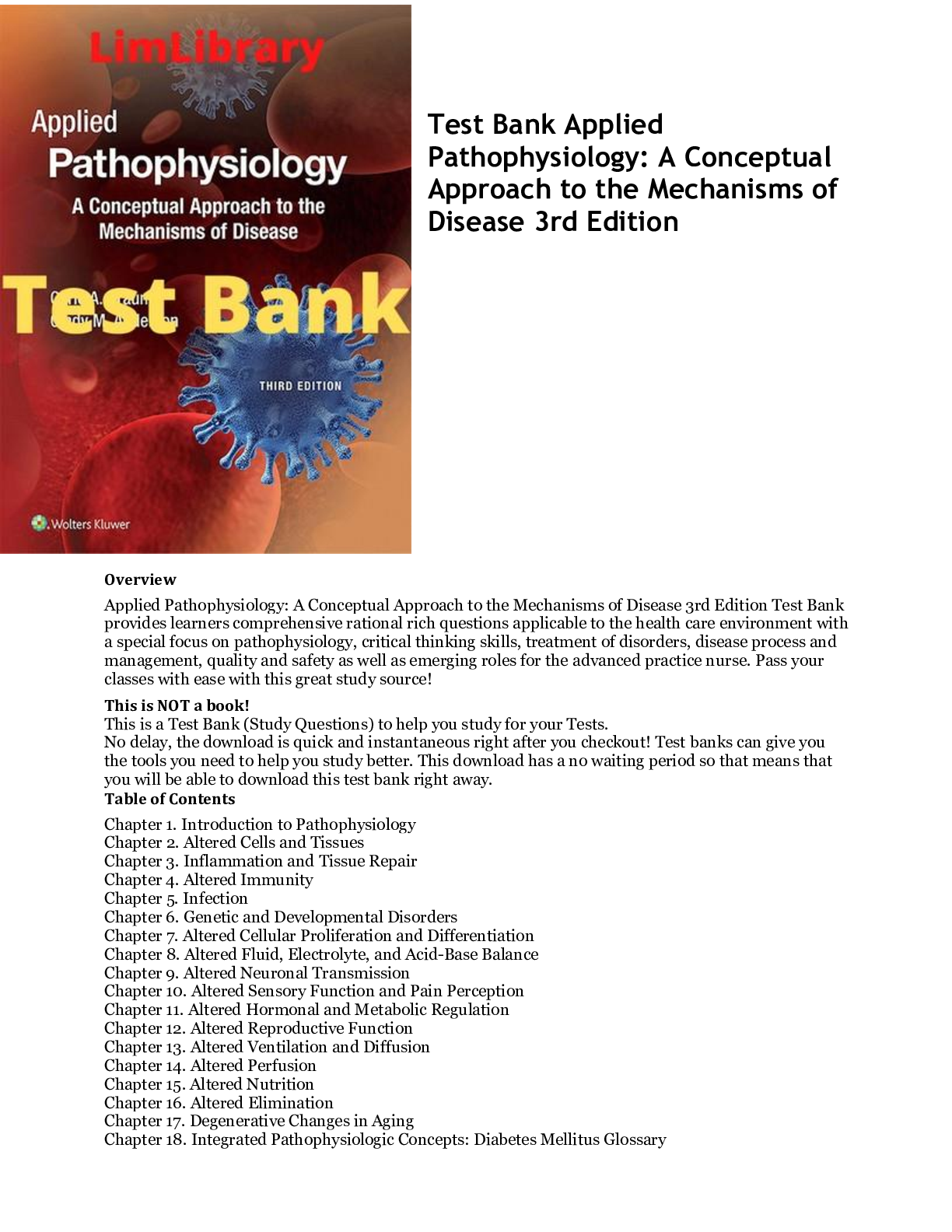

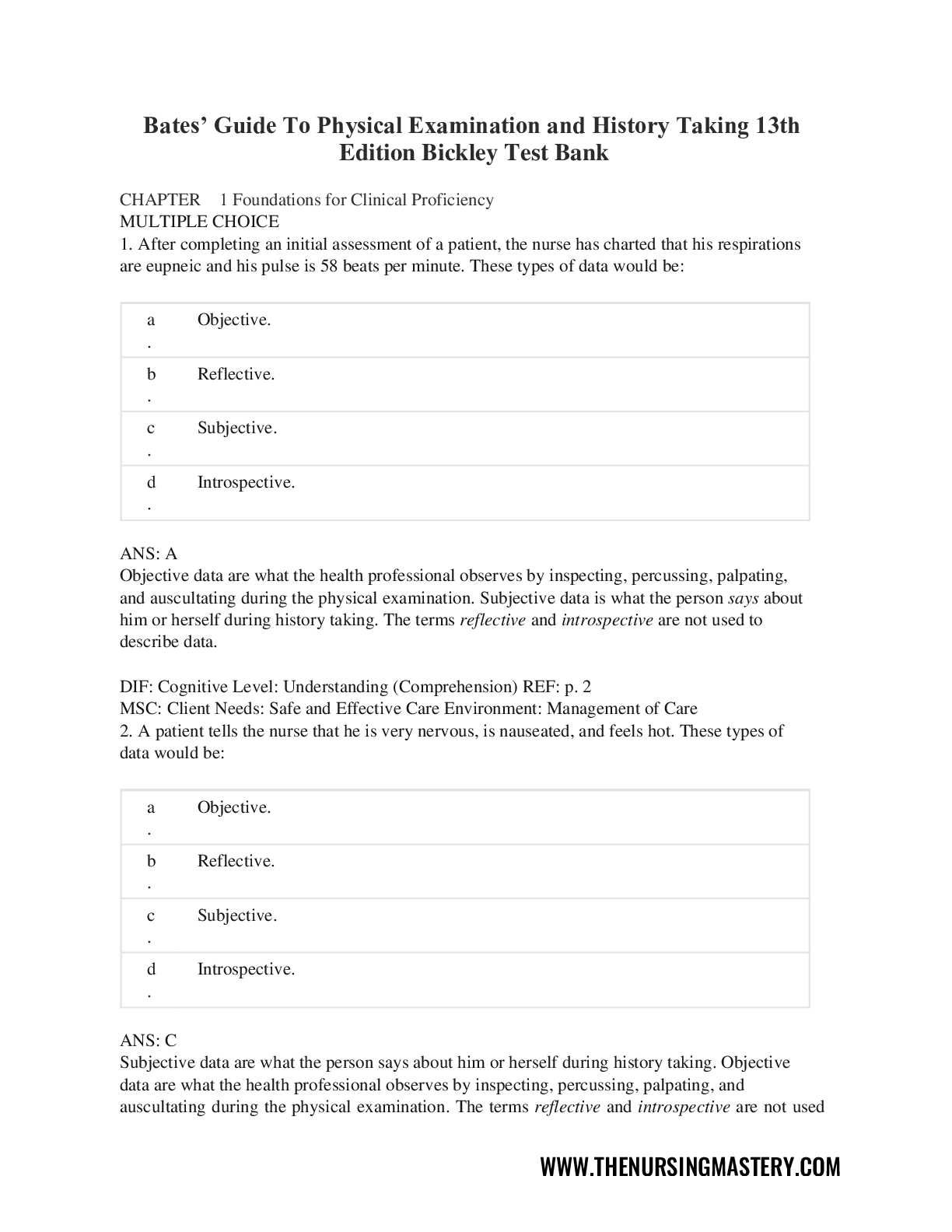
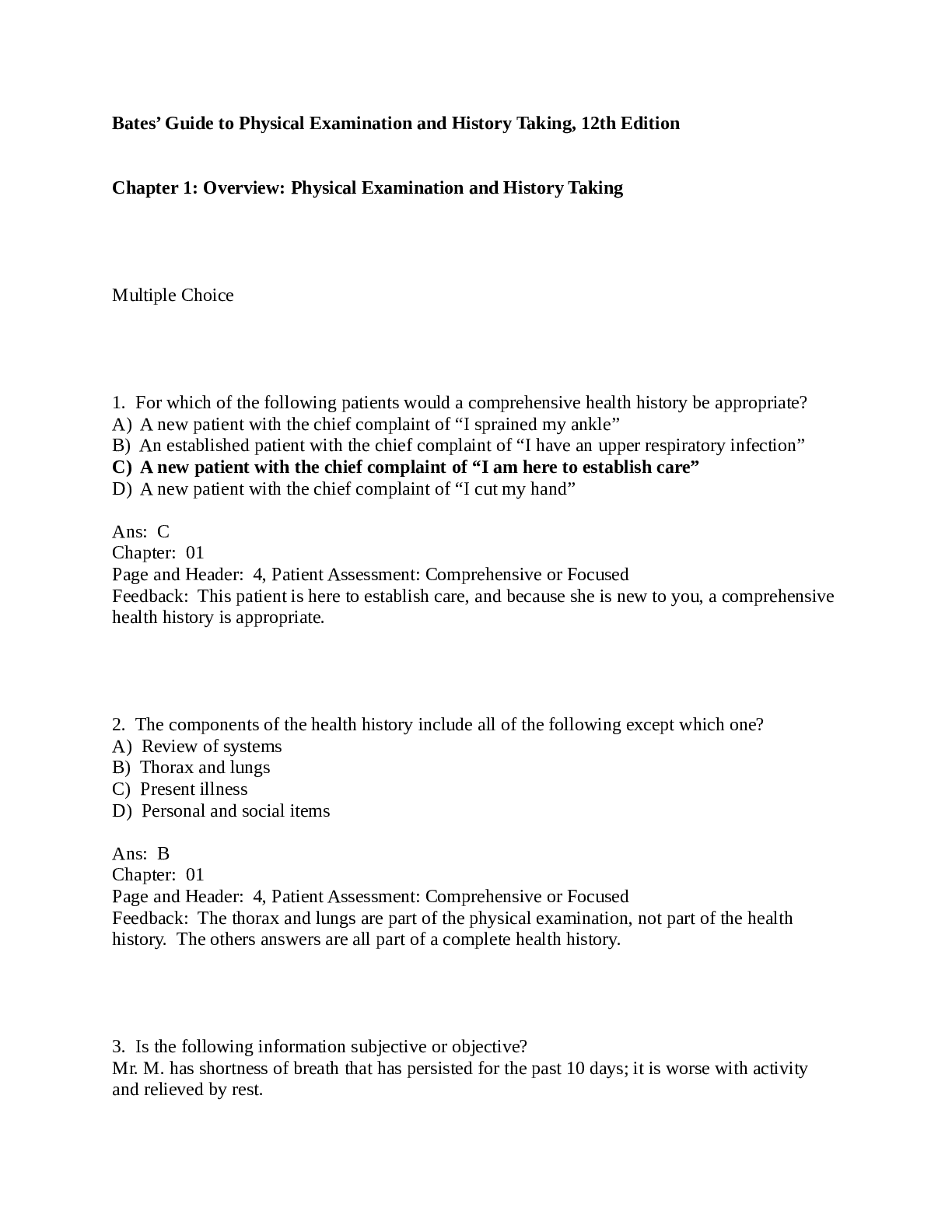
.png)
.png)
.png)

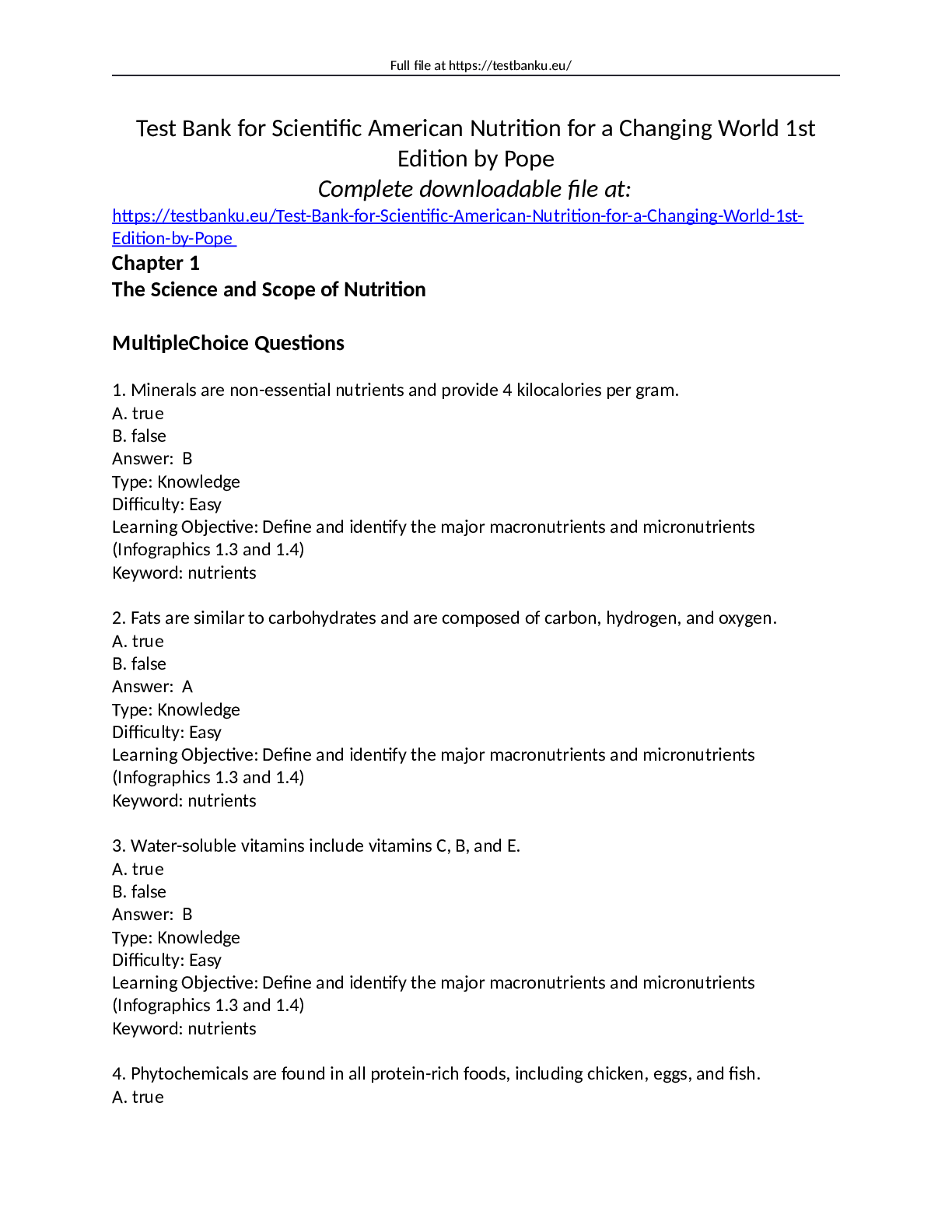
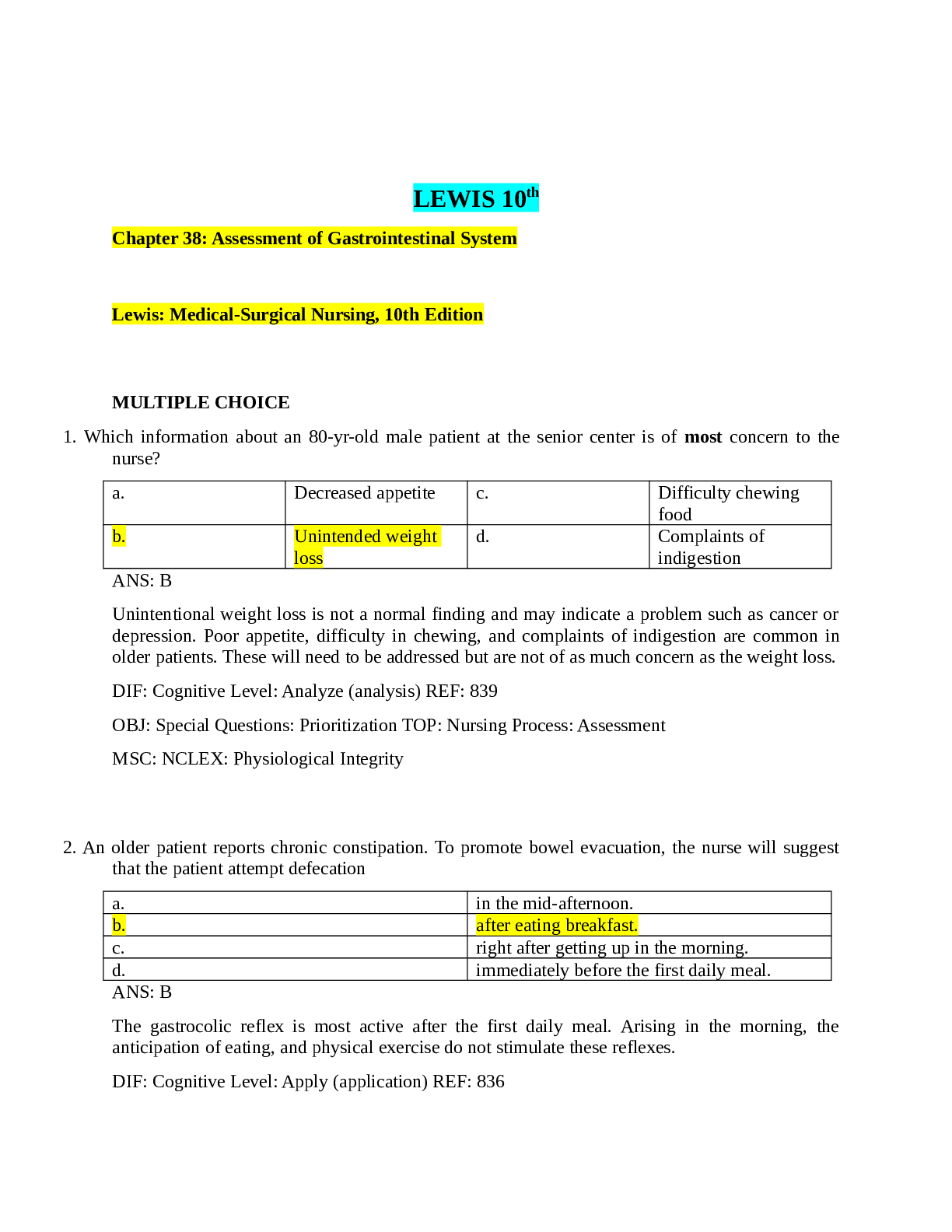



.png)
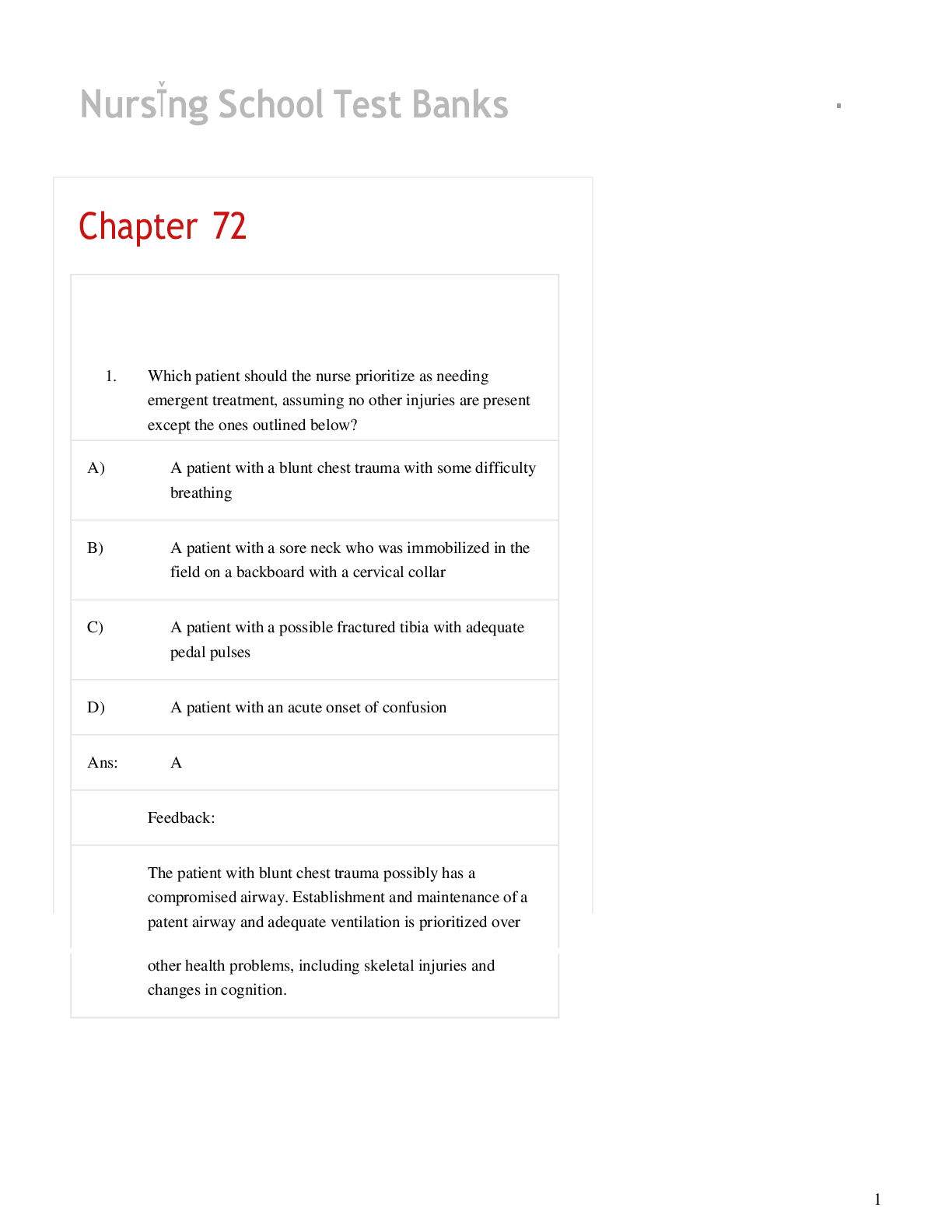



.png)
.png)

